Exploring the Cazuela Clay Pot: Culinary Heritage and Benefits

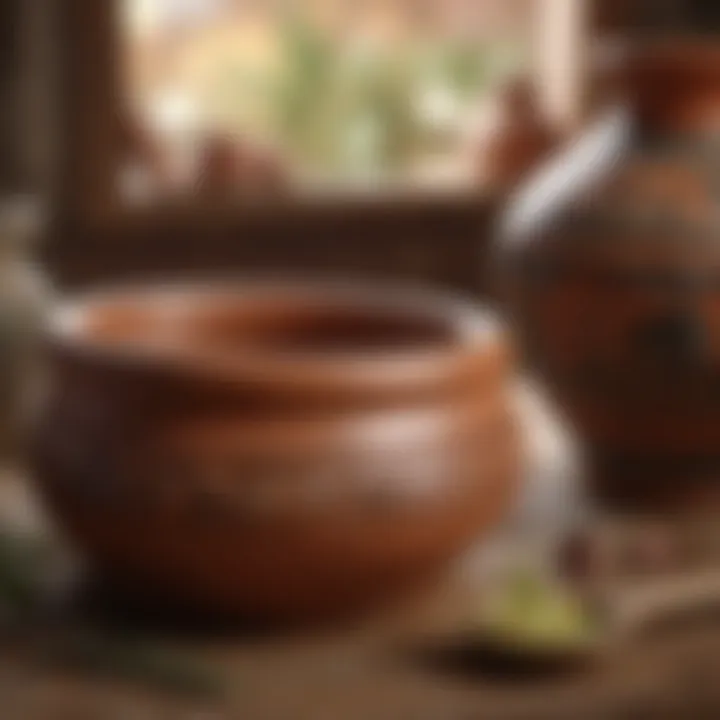
Intro
The cazuela clay pot stands as more than just a mere kitchen tool; it embodies a rich history spanning various cultures, primarily in Spanish and Latin American cuisines. Spanish colonizers brought clay cooking techniques to America, thus enriching culinary traditions across regions. The tactile nature of clay combined with superior heat retention has become fundamental for cooking everything from savory stews to delicate desserts.
Utilizing clay pots for cooking provides both functional and sensory experiences. The social aspect of preparing meals with a cazuela enhances communal sharing and ties, allowing deep cultural connections over something as fundamental as food.
This article will unveil the allure behind the cazuela clay pot, exploring its significance, versatile uses, and the numerous culinary benefits that this time-honored tool possesses. The journey begins by illuminating the vibrant origins and traditional recipes, before guiding you into practical tips for maintenance, cooking techniques, and recommended pairings.
Prepare to delve into the world of cazuela and discover how this simple earthenware can elevate your culinary pursuits.
Prologue to Cazuela Clay Pots
The cazuela clay pot is an essential element of various culinary traditions, evoking a warmth that goes beyond mere cooking. In this section, we uncover the significance of cazuelas in shaping meals and preserving cultural flavors. They have remained popular for good reasons—they offer unique cooking properties that enhance both texture and taste.
A cazuela functions effectively over open fires and in ovens, making it a highly versatile cooking tool. The porous nature of clay absorbs and retains heat, ensuring even distribution during cooking. This attribute enhances the depth of flavors in any dish prepared, from stews to casseroles.
Definition and Characteristics
Cazuelas are traditional clay pots, often handcrafted from earthen materials, primarily found in regions like Spain and Latin America. They come in various shapes and sizes, each designed for specific cooking methods or types of cuisines. Most cazuelas have a relatively thick base but taper up towards a wider rim. This design helps in regulating heat and moisture during the is preparation of dishes.
The interior of a cazuela is usually unglazed but sometimes comes with a fine layer of glaze for easier maintenance. They can often withstand high cooking temperatures but are sensitive to sudden temperature changes. Experienced cooks understand that place the cazuela in a cool oven when preheating or gradually warming is essential to prevent cracks.
Attributes like weight, appearance, and the number of decorative designs can vary greatly, resulting in individualistic touches each cazuela contributes to the kitchen.
Cultural Significance Across Regions
Cazuelas hold abundant cultural meaning across regions. In Spain, their use is tightly linked to recipes passed through generations. Whether it is a simmering paella or cocido, the cazuela enhances not only the flavor but creates a social hub around meal preparation.
In Latin America, cazuelas signify traditions connected to collective family cooking. They are often the choice for preparing life’s celebratory dishes. Also, many regions attach significance to specific types of food cooked in cazuelas. Thus, each time a cazuela is used, it becomes a vessel not just for food, but for storytelling and preservation of cultural identity.
Cazuelas are more than just cooking pots; they resonate deeply with the heritage, nurturing relationships among friends and family through shared meals.
Historical Context of Cazuela Usage
The cazuela has a rich historical context, serving as a bridge between culinary traditions and cultural heritage. Understanding this history is crucial for appreciating the significance of these clay pots in both local and global cuisines.
Origins of the Cazuela
The cazuela likely originated in the ancient civilizations of the Mediterranean region. Archaeologists trace some of the earliest petrified designs to the Iberian Peninsula, where the art of clay pottery first flourished. Historically, these pots were not merely cooking vessels; they were integral to meal preparation. During communal gatherings, their ability to maintain and enhance flavor made them highly sought after among different societies.
In Spain and Latin America, different communities adopted the cazuela over centuries, cleverly incorporating local techniques and traditions into their usage. The rough texture and porous nature of the clay allows for unique flavor profiles, which is why slow-cooked stews and traditional beans are commonly prepared in cazuelas. Today, in addition to cazuelas, you can often see tagged versions appear with varying decorative features and materials that reflect regional artistry and culture.
Evolution Over Time
Over time, the* cazuela* transformed inline with sociocultural trends and technological changes. In the initial stages, cazuelas were commonly made from river clay. As trade flourished, a variety of materials were employed, including white Spanish clay and other robust compositions that enhance durability. This diversity created unique forms optimized for different cooking styles.
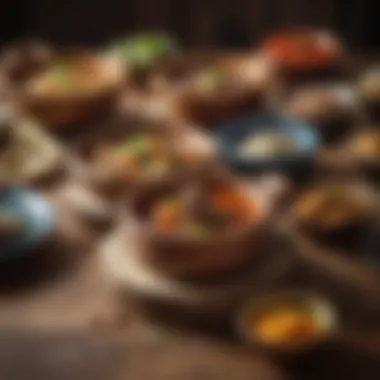
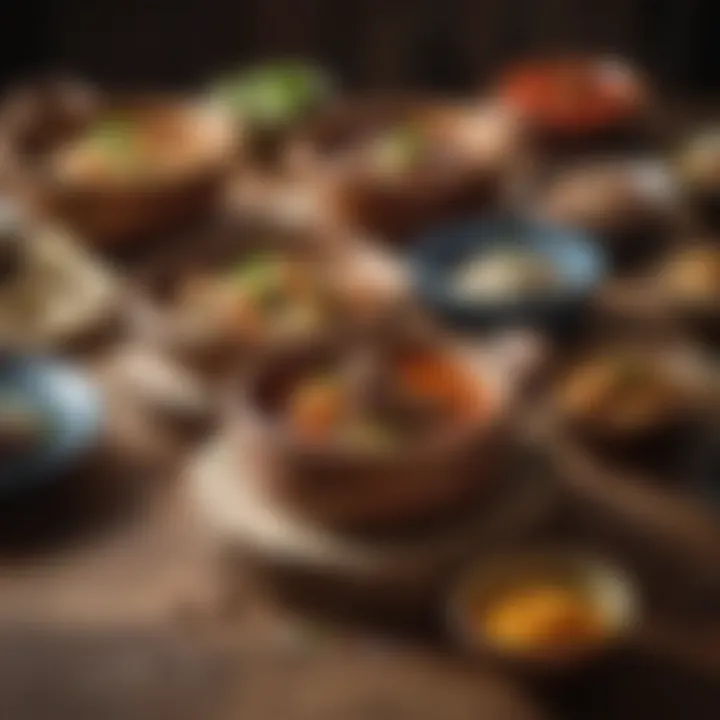
The evolution of cazuelas month through many facets: their role shifted from basic everyday pots to revered cultural artifacts that are often used in culinary events today. Chefs began experimentring with cazuela recipes, finding an affinity for traditional methods that offer rich tastes. Regional flavors continue to define their adaptation, leading to a blended cuisine that is increasingly represented on global plates.
In today’s kitchen, you can see cazuelas spell out creativity, whether in classic Spanish paella or spicy Latin-American caldillo. Chefs and home cooks alike embrace these vessels not for just their practical uses but for the stories and memories they preserve. As culinary traditions continue to mingle, their significance solidifies in contemporary cooking landscapes.
“Understanding how the cazuela evolved, provides context that enriches modern culinary practices.”
Culinary Applications of Cazuela Clay Pots
Cazuela clay pots represent an intersection of practicality and tradition in culinary applications. Their design isn’t merely aesthetic; instead, it embodies strategic functionality. Cooking with cazuelas leads to enhanced flavor profiles, assisting in the gradual, even cooking of various dishes. This piece aims to outline the essence of cazuela clay pots in the kitchen, focusing on their diverse applications, the specialties prepared within them, and contemporary adaptations.
Common Dishes Prepared in Cazuelas
Cazuelas are incredibly versatile. Their robust characteristics allow them to withstand different cooking methods, whether it's on the stovetop or in the oven. In the warmth of Latin kitchens, one might find:
- Paella: This iconic Spanish dish owes part of its depth to the even heat distribution offered by cazuelas.
- Cocido: A traditional stew varied by region, cocido can simmer for hours, allowing the ingredients' natural flavors to meld.
- Fajitas: Slow-cooking meats in cazuelas heaps layers of flavor and keeps them tender.
These fireside favorites underscore how cazuelas contribute to a dish’s authenticity. The clay enhances the natural aroma of the ingredients, while the intimate familiarity of these recipes bonds communities across generations.
Techniques for Cooking with Cazuelas
There are special techniques ensuring the best outcomes when using a cazuela. Notably:
- Preheating: Unlike other cookware, cazuelas benefit from gradual heating to maximize heat retention,
- Layering: Placing tougher ingredients at the bottom and softer items on top can yield optimal results. This chain reaction in cooking guarantees that every ingredient gets its due time.
- Liquid Management: Cazuelas prevent excessive moisture loss, which is especially beneficial for slow-cooked dishes where a tightly controlled moisture setting is critical.
Mastering these techniques leads to both traditional and modern culinary success.
Adaptations for Modern Recipes
Cazuelas remain relavent even as culinary trends evolve. Integrating cazuelas in modern dishes can transform a simple meal into culinary art.
- Grain Bowls: Utilizing cazuelas for earthy grains promotes a heartier texture and flavor.
- Lighter Recipes: One can explore blending iconic kidnapping ingredients with healthier components, such as quinoa-stuffed peppers, to present more nutritious offerings.
These modern adaptations bridge the gap between heritage and contemporary cuisine, emphasizing the cazuela's role in uniting tradition with innovation.
In summary, cazuela clay pots not only anchor flavors together with time-tested dishes but also organically create space for contemporary culinary explorations. Each method and recipe contributes to the longevity of cazuelas in kitchens, from home cooks to professional chefs.
Benefits of Using Cazuela Clay Pots
Using cazuela clay pots brings various benefits, which deeply enrich the cooking experience. Their unique properties not only enhance the flavors of dishes but also offer health advantages and sustainability. This section will explore these specific elements, illustrating why incorporating cazuela pots in culinary practices is worth considering.
Health Benefits of Clay Cooking
Cooking with cazuelas is linked with healthier food preparation methods. Clay generally does not leach harmful substances into food, unlike some metal or plastic cookingware. It has a natural ability to retain nutrients while cooking. When using a clay pot, foods often cook thoroughly, ensuring better caramelization without forming unhealthy compounds. This feature makes cazuelas favorable for cooking vegetables, meats, and stews. Many cooks also appreciate that clay pots minimize the need for excessive oils or fats, promoting heart-healthier meals.
Flavor Enhancement and Food Preservation
One of the standout characteristics of cazuelas is their ability to enhance flavor profiles. The porous nature of clay allows for a subtle infusion of the earthiness that can add depth to any dish. This pot retains moisture, creating an ideal environment for cooking slow-roasted meats or simmered vegetable dishes. Dishes prepared in cazuelas gain a unique taste that enhances with each use. In addition, clay pots offer better food preservation due to their natural temperature regulation. Foods remain at optimum temperature longer, aiding in preserving freshness.

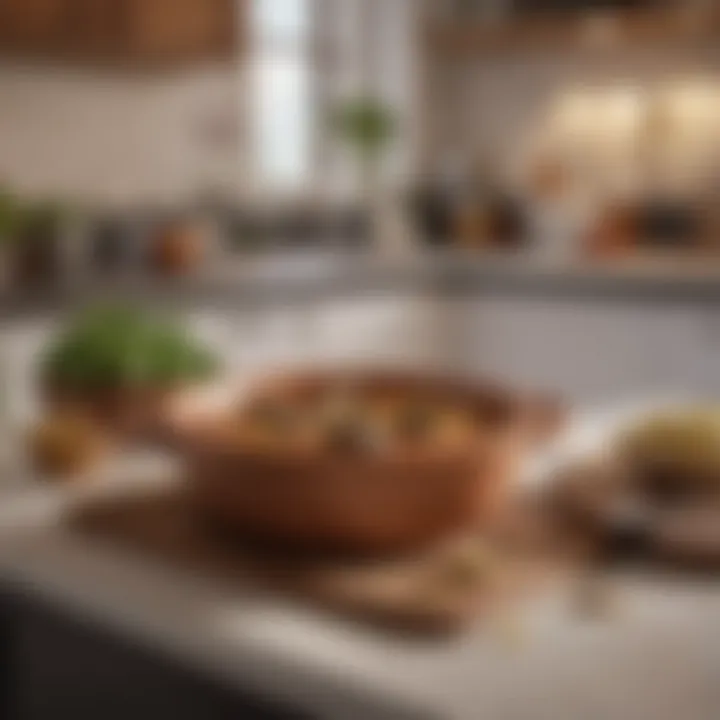
Environmental and Sustainability Factors
Cazuela clay pots are an ideal choice for sustainability. They are often made from natural materials that are abundant and reduce impact on the environment. When using cazuelas instead of non-biodegradable options, cooks contribute to less plastic waste. Furthermore, their durability promotes a long lifespan, meaning fewer replacements over time. This eco-friendly aspect resonates with today’s emphasis on sustainable cooking practices. Choosing cazuelas aligns cooking preferences with environmental awareness, making it a worthy investment in both cooking and caring for the planet.
In multiple culinary traditions, the cazuela takes center stage, representing a commitment to good health, tasteful meals, and sustainability.
Choosing the Right Cazuela Clay Pot
When it comes to cooking with cazuela clay pots, selecting the appropriate one can amplify your culinary experience. Cazuelas offer unique properties that enhance flavors, and choosing the right type can ensure successful cooking. Considerations such as materials, size, and shape can profoundly impact your dishes and your cooking practices. Here, we examine these key elements that should guide your decision.
Materials and Construction
Cazuelas are typically made from clay, but not all clay is the same. Two common materials are the traditional unglazed ceramic and glazed ceramic options. The difference plays a key role in how your food cooks.
- Un глазед cazuelas allow for better heat retention and promote moisture retention. This leads to tender and flavorful dishes. However, they require care in cleaning and can absorb odors if not maintained well.
- Glazed cazuelas are easier to clean and are non-porous. They don’t absorb flavors, which can be a benefit when cooking diverse dishes. However, the glazes might impede certain chemical reactions beneficial in clay cooking.
In terms of construction, look for pots that are well-crafted and have thick walls. A thicker pot provides better insulation, allowing even heat distribution, which is crucial for the desired culinary results. When choosing a cazuela, inspect for imperfections in the ceramic, which could compromise functionality.
Size and Shape Considerations
Size and shape are equally important elements to determine. Cazuelas come in various sizes, often ranging from small personal servings to large family-sized options. When selecting a cazuela, consider the quantity of food you typically prepare. For individual servings, a smaller pot suffices, while larger pots are useful for stews or dishes meant to serve many.
Additionally, the shape of the cazuela also matters. Standard round cazuelas are versatile in that they cook various types of dishes well. Meanwhile, oval or rectangular cazuelas can be better suited for specific recipes such as casseroles. They also tend to allow for easier serving if you intend to place them on the table directly.
When choosing your cazuela, think about both the practical use and the aesthetic appeal it adds to your kitchen. A well-chosen cazuela can elevate not only your cooking but also the presentation of your meal.
Cazuelas have stood the test of time because of their unique characteristics, but even the best cannot fulfill their potential without the right choice.
Caring for Your Cazuela
Caring for your cazuela is crucial to ensure its longevity and optimal performance in the kitchen. These clay pots are not only functional but also cultural artifacts, retaining flavors and traditions through generations. Taking proper care of a cazuela impacts not just its life, but also the quality of the food it helps prepare. Therefore, it is essential to understand the recommended cleaning practices and the methods needed to season your cazuela.
Cleaning Recommendations
Cleaning your cazuela requires special attention. Do not use abrasive materials that can scratch the clay. Here are some steps you should follow for maintaining your cazuela:
- Initial Rinse: Always rinse the pot in cold water after cooking. This will help remove food residues effectively.
- Gentle Scrubbing: If food is stuck, use a soft sponge with warm water and mild soap. Steel wool or harsh detergents must be avoided to preserve the clay's integrity.
- Soaking Stubborn Surfaces: For hard stains, soak the cazuela with a mixture of warm water and vinegar for a few hours. Afterwards, scrub gently. This will ensure the pot remains clean without damaging its surface.
After cleaning, thoroughly dry the cazuela before storing it. Placing it in direct sunlight for a while can also help with ultimate moisture removal. This process reduces the chance of molds and unpleasant odors.
Proper care ensures the cazuela remains a dependable companion in your culinary adventures.
Seasoning and Longevity
Seasoning your cazuela is equally important. This process builds a protective layer, making the pot more resilient against cracking and enhancing the flavors over time.

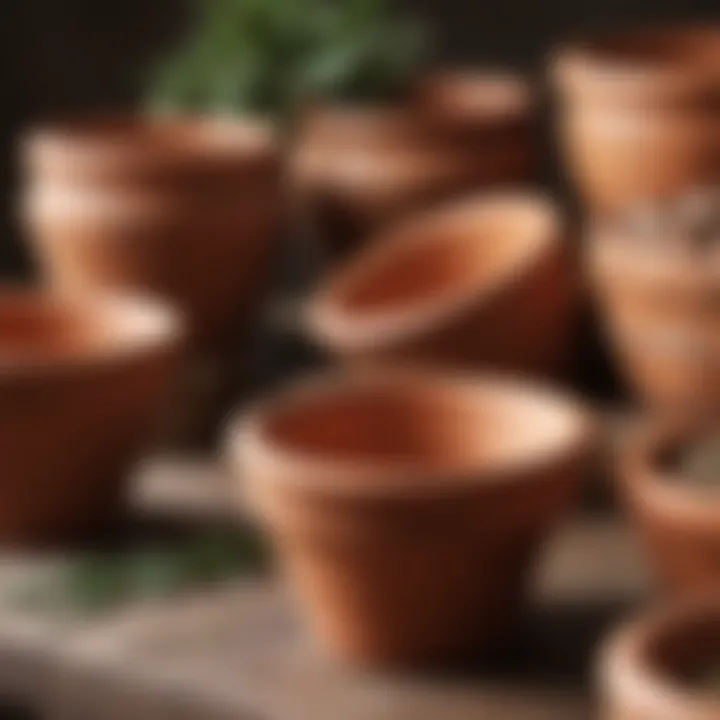
- Initial Seasoning: Before using a new cazuela, soak it in cold water for 6-12 hours. Then, simmer water filled with a few teaspoons of salt for about an hour. This process closes the pores of the clay and prepares it for cooking.
- Ongoing Seasoning: Continue to reinforce the seasoning by cooking oily dishes regularly. Olive oil or other healthy oils work well for maintaining a seasoned surface. This routine helps maintain a non-stick quality as well.
With these practices, a well-cared-for cazuela can last for many years, becoming more effective in the kitchen as it ages. Its very seasoning allows it not just to absorb flavors, but also to impart richer tastes in meals over time, thus establishing its significance in traditional and modern cooking alike.
Cazuela in Contemporary Cuisine
The cazuela clay pot stands as a testament to traditions that have permeated through centuries. In today's culinary landscape, understanding its role highlights the significance it holds. This section addresses not only fusion cooking and how modern recipes incorporate this ancient vessel, but also how chefs around the world are reintroducing cazuelas into mainstream cuisine. Through contemporary interpretations, the cazuela is evolving from its traditional roots while maintaining its historical essence.
Fusion Recipes Using Cazuelas
Fusion cooking often showcases cultural amalgamation, and182 cazuelas sit prominently across different culinary practices. These pots accommodate an array of ingredients and methods, allowing cooks to experiment with traditional and unconventional recipes.
A practical example of fusion recipes includes adaptations of hearty stews combined with spices from varied heritages. For instance:
- Mediterranean-Chili Cazuela: This engages classic chili flavors melded with olive oil, lentils, and chickpeas. The depth provided by slow cooking in the cazuela enhances both the flavor and texture of the dish.
- Italian Risotto Cazuela: Integrating the fundamentals of risotto with local herbs and seafood introduces diverse flavor profiles while benefiting from the cazuela's ability to evenly distribute heat.
Each of these dishes supports cooking techniques, utilizing both the earthenware’s temperature retention and moisture conservation. Such innovations personalize recipes while marrying different culinary traditions.
“A fusion recipe created in cazuelas not only speaks volumes about the creativity of modern chefs but also pays homage to the vessel's rich heritage.”
Chefs and Cazuelas: A Trend Analysis
In continental and international dining experiences, the resurgence of cazuelas is evident. Several celebrated chefs are incorporating cazuelas into their kitchens, recognizing their versatility and own unique characteristics.
For example, influential chefs utilize:
- Rowena Contestah finds that the charm of rustic presentation enhances the dining atmosphere.
- Eric M. Vendreal emphasizes flavor retention that promotes balancing tastes and textures over time.
Coupled with social media and cooking shows, contemporary chefs actively weave cazuelas into chef-led narratives. Public interest has surged. Restaurants focus on experiential dining that highlights traditional techniques. They not only present food served in cazuelas but also share their stories about local sourcing, craftsmanship, and care for these vessels.
Therefore, encapsulating the cultural significance alongside modern usage depicts how cazuelas continue to thrive in today's changing culinary equivalence. Keeping the past relevant amidst innovation enriches dishes experienced globally, educating diners while inviting them to appreciate history and complexity inherent in culinary arts.
Epilogue: The Enduring Appeal of the Cazuela
The cazuela clay pot captivates both seasoned chefs and home cooks. Its cultural significance and versatility in modern cuisine highlight why it remains relevant in today's bustling culinary landscape. The allure of the cazuela lies in its ability to bridge traditional cooking methods with contemporary culinary demands.
Embracing the cazuela is, in essence, about honoring age-old traditions while adapting to the swift evolution of cooking practices. This mixture of cultures and culinary expertise adds depth to any dining experience, enriching the flavors of myriad dishes. It is a testament to how ancient tools can continue to inspire modern meals.
Embracing Tradition in Modern Cooking
The modern kitchen, often filled with high-tech gadgets, can seem disconnected from its roots. However, the cazuela serves as an essential link back to tradition. It teaches cooks the value of ingredients, slow cooking, and the nuanced ways flavors can meld over heat and time.
When using a cazuela, a cook might opt for simpler, wholesome ingredients, elevating meals to a new plane of enjoyment. Local markets further enhance this experience, encouraging the use of seasonal produce. The authenticity it brings forms an irreplaceable therma in every dish prepared in it.
Challenging the idea that efficiency means abandoning quality, cooks find ways to integrate a cazuela's use into contemporary influences. From crafting fusion dishes to recreating old family roles, the cazuela remains a fond symbol of heritage.
Future Perspectives on Cazuela Use
Exploring future perspectives, we can become aware of significant shifts in culinary trends. As sustainability becomes more crucial, cazuelas provide environmentally-friendly choices. Their long-lasting nature and the use of natural materials trailblaze paths away from single-use plastics
The drive towards plant-based and locally-sourced meals also nudges us to appreciate cazuelas more. Their design emphasizes flavors and freshness while lending a rustic romanticism to the dining table. They operate in a unique sphere, reminding us that spending time and effort in cooking grants an elevated dining experience.
Growing interest in global cuisines encourages more cooks to incorporate cazuelas into their repertoire. Chefs and home cooks alike will take inspiration from this enduring appliance. Encountering new and exciting dishes, we might see this clay pot reliving pivotal roles in modern cooking.







